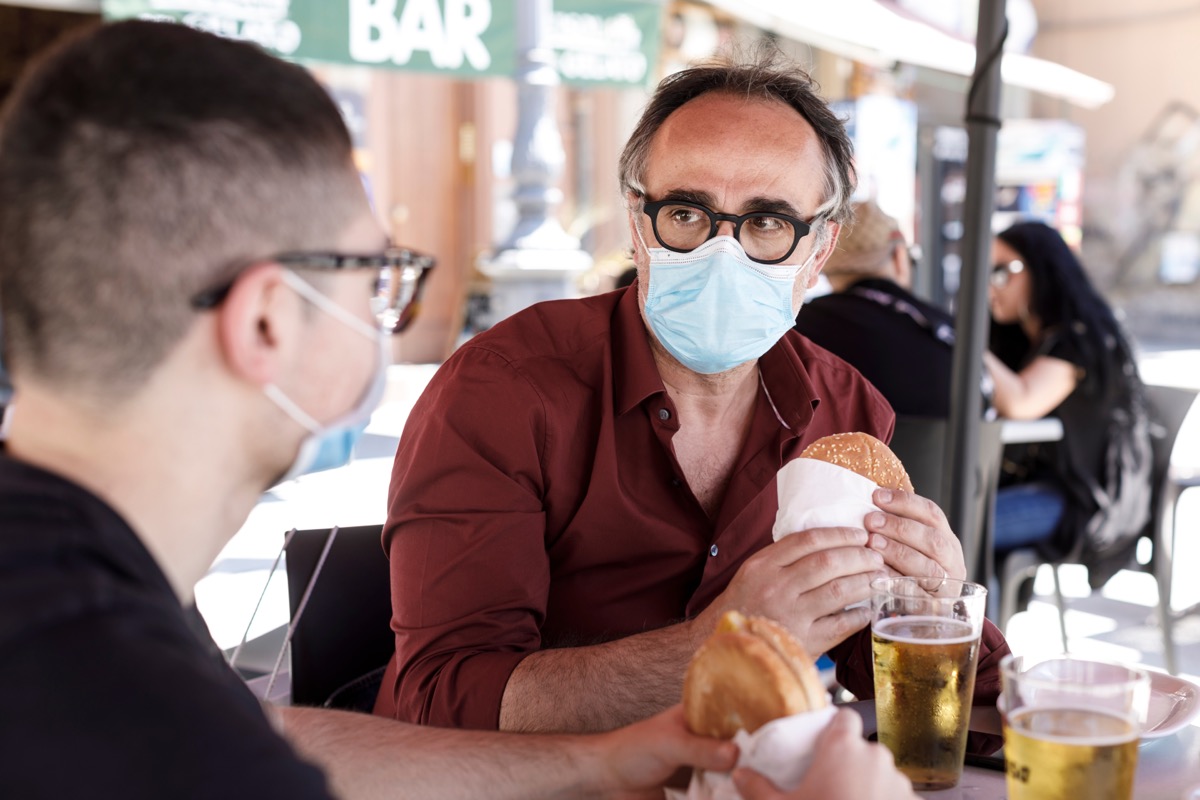Reaching zero COVID cases is nearly impossible, The Atlantic reports in a new in-depth article. But the next best thing is COVID becoming an endemic disease, one that still lingers in the community at low levels but doesn’t inflict severe illness often. Once COVID reaches that point, it will be much more manageable. Paul Offit, MD, the director of the Vaccine Education Center at the Children’s Hospital of Philadelphia, told The Atlantic he thinks “the doors will open” when the country sees fewer than 5,000 new cases a day, and fewer than 100 deaths a day.ae0fcc31ae342fd3a1346ebb1f342fcb Multiple experts agree with Offit’s metrics. “Fewer than 100 deaths a day—to mirror the typical mortality of influenza in the U.S. over a typical year—is an appropriate goal,” Monica Gandhi, MD, an infectious disease specialist at UC San Francisco, told The Atlantic. While these numbers are far from zero, this risk level is “largely considered acceptable,” Joseph Eisenberg, PhD, an epidemiologist at the University of Michigan, told The Atlantic. And for more up-to-date COVID news delivered straight to your inbox, sign up for our daily newsletter. If we’re measuring ourselves against flu metrics, we have a long way to go before we can call the pandemic a thing of the past. According to the CDC, the country’s most recent seven-day average was 1,975 deaths a day, as of Feb. 22. That’s down 36 percent from 3,108 deaths two weeks earlier on Feb. 8. If things continue at this pace, that means it’d take another 14 weeks, or three and a half months, to get to under 100 deaths a day. At this rate, we’d reach endemic status in early June, but of course, many factors could come into play that affect that estimate. And for more on our return to normal, check out The CDC Is About to Relax These COVID Restrictions, Dr. Fauci Says. While less than 5,000 new cases a day matches up with the flu’s average numbers, some experts feel that cases need to drop even lower before we should feel comfortable returning to normal. Crystal Watson, DrPH, a health security scholar at Johns Hopkins University, told The Atlantic that a threshold of 0.5 newly diagnosed cases per 100,000 people per day and a test positivity rate of less than one percent nationwide would be better metrics. Watson noted that to consider ourselves past the pandemic, we should also log at least one month of business as usual at hospitals during which there are no staff or equipment shortages. These more stringent measurements would be even more challenging to reach. The U.S. reported 135.25 new cases per 100,000 people on Feb. 22, according to the CDC, which is down 42 percent from the 233.52 new cases per 100,000 reported two weeks prior on Feb. 8. If new cases continued to decline at that rate, it’d be 20 weeks—or five months—until COVID reached endemic status, which would put us at mid-July. And for more on life post-vaccination, check out Dr. Fauci Still Won’t Go to These 3 Places Now That He’s Vaccinated. Comparing COVID numbers to flu numbers isn’t a perfect system since COVID-related deaths are reported to public health authorities, while flu deaths are estimates based on national surveillance data from statistical models, explained The Atlantic. Additionally, considerably more COVID tests are done than flu tests, meaning positive cases are difficult to compare. However, many experts consider measuring COVID against the flu to be the best metric we have for the moment as a predictor of the end of the pandemic. To see when experts think the virus will begin to dissipate, check out COVID Will Be “Mostly Gone” By This Date, Johns Hopkins Doctor Says.



